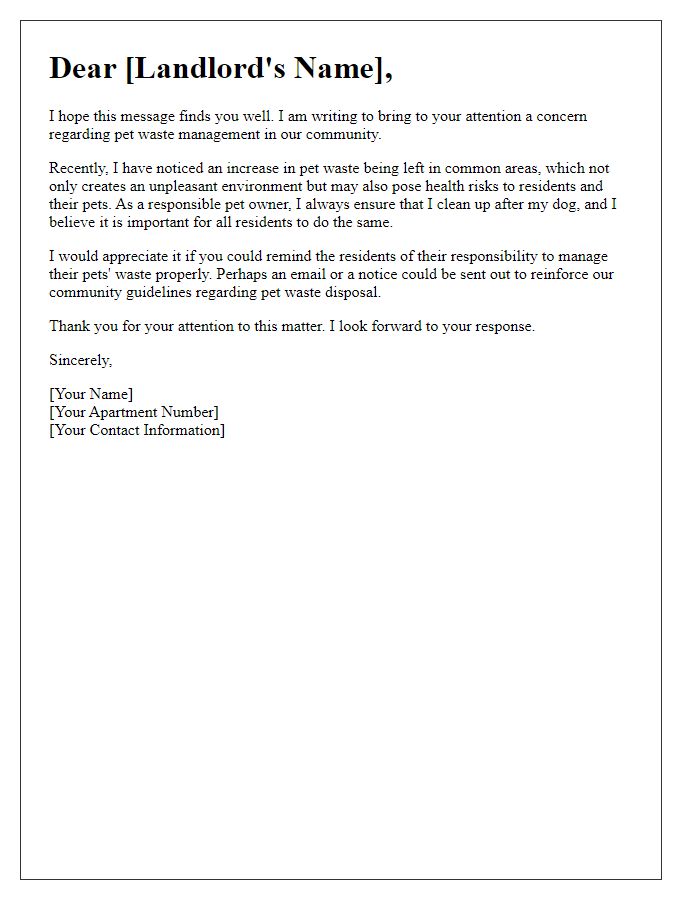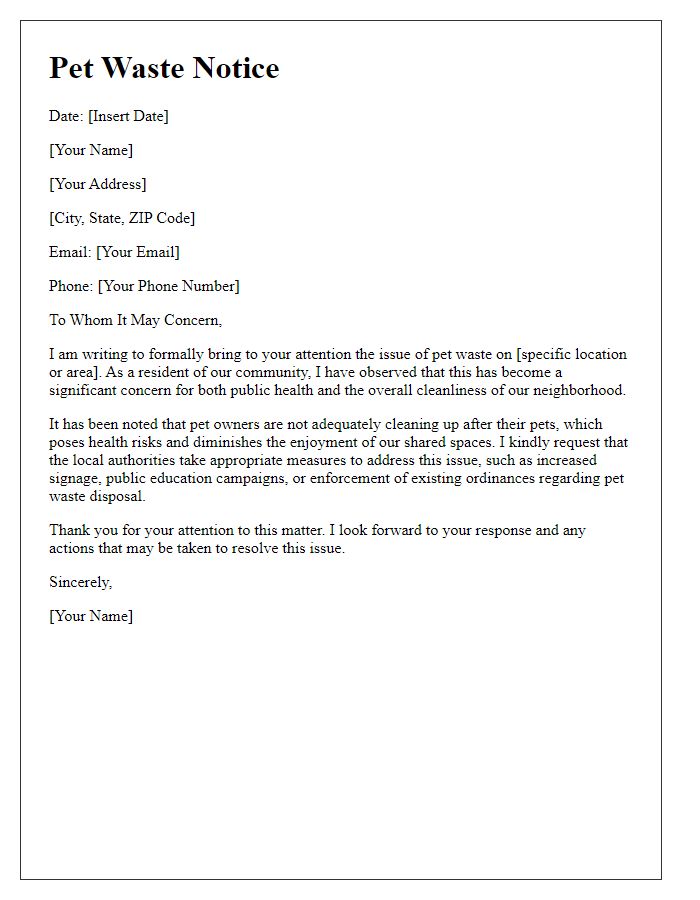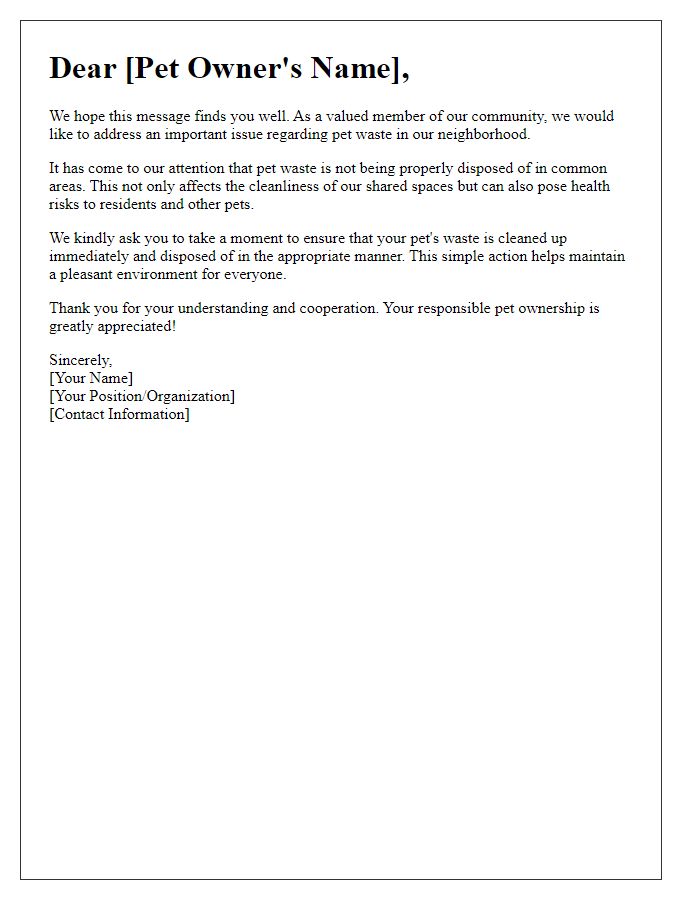Are you frustrated with the persistent issue of pet waste in your neighborhood? You're not aloneâmany residents are grappling with the challenges of responsible pet ownership and its impact on community cleanliness. In this article, we'll explore effective ways to address pet waste complaints, ensuring your concerns are heard while maintaining a friendly tone with pet owners. Curious to learn more about crafting the perfect complaint letter? Let's dive in!

Clear Description of the Issue
Excessive pet waste accumulation in public parks, such as Central Park in New York City, detracts from the natural beauty and usability of green spaces. Areas like the Great Lawn, frequented by families and individuals alike, have reported numerous incidents of uncollected dog feces, leading to unsightly and unsanitary conditions. High traffic zones, particularly around pathways and children's play areas, pose health risks such as the transmission of parasites and bacteria, which can affect both pets and humans. Additionally, this neglect can discourage community engagement and enjoyment of these essential recreational areas, resulting in diminished use by residents and visitors. Regular maintenance and proper waste disposal solutions are urgently needed to restore the integrity of these cherished public spaces.
Impact on Community and Environment
Pet waste accumulation poses significant challenges for community health and environmental integrity in urban areas. Neglected areas, such as public parks or sidewalks, can harbor harmful bacteria, including E. coli and Salmonella, which pose health risks to residents and their pets. Moreover, untreated pet waste contributes nutrients such as nitrogen and phosphorus to local waterways, leading to harmful algal blooms that disrupt aquatic ecosystems. These blooms can deplete oxygen levels, endanger fish populations, and hinder recreational activities like swimming and fishing in nearby lakes or rivers. Community members often express concern about the unpleasant odors and visual pollution caused by pet waste, which detracts from the neighborhood's overall appeal and quality of life. Therefore, addressing this issue is critical for fostering a cleaner, healthier living environment for all residents, as well as safeguarding local wildlife and ecosystems.
Request for Action or Resolution
Pet waste accumulation in urban environments often leads to health hazards and unpleasant odors, particularly in communal areas such as parks and sidewalks. Many municipalities, including Los Angeles (population over 4 million), have implemented ordinances mandating pet owners to clean up after their animals to ensure public hygiene. However, neglect by some pet owners can result in unsightly messes, attracting pests like rats or flies, and promoting the spread of disease. Proper waste disposal, through biodegradable bags and designated waste bins, is crucial for maintaining community standards and protecting local wildlife, including birds and small mammals that may find themselves in polluted environments. Encouraging local government action, such as increased signage or regular patrols, can significantly improve cleanliness in these shared spaces.
Contact Information for Follow-up
In urban neighborhoods, pet waste management poses significant challenges for community cleanliness and public health. Local regulations often enforce the cleanup of pet excrement to maintain sidewalks, parks, and residential areas. Failure to adhere to these guidelines leads to unsightly messes, potential health hazards such as parasites, and increased attraction of pests like rodents. Communities need to establish awareness programs to educate pet owners on their obligations, which include carrying waste bags and proper disposal methods. Local authorities may also consider implementing waste stations equipped with supplies for responsible pet ownership, promoting a healthier and cleaner environment for all residents.
Polite and Professional Tone
Pet waste management in urban neighborhoods, especially in communities like Meadowbrook, is essential for maintaining public health and aesthetics. Unscooped waste can lead to unpleasant odors and attraction of pests such as rodents, which thrive in unsanitary conditions. Additionally, pet waste contains harmful bacteria that contaminate soil and water sources, posing risks to local wildlife and children playing in parks. Effective communication with pet owners can encourage responsible pet ownership and promote cleanliness in shared spaces, ultimately contributing to a more pleasant living environment for all residents.













Comments